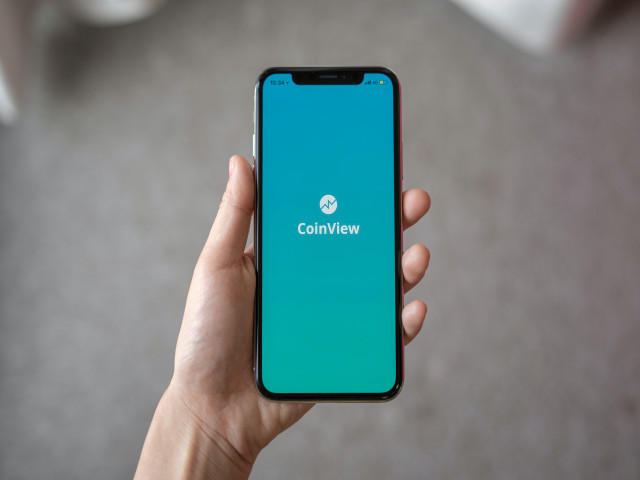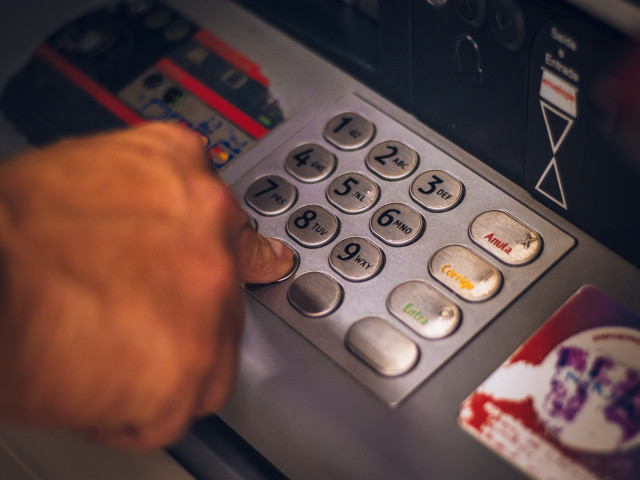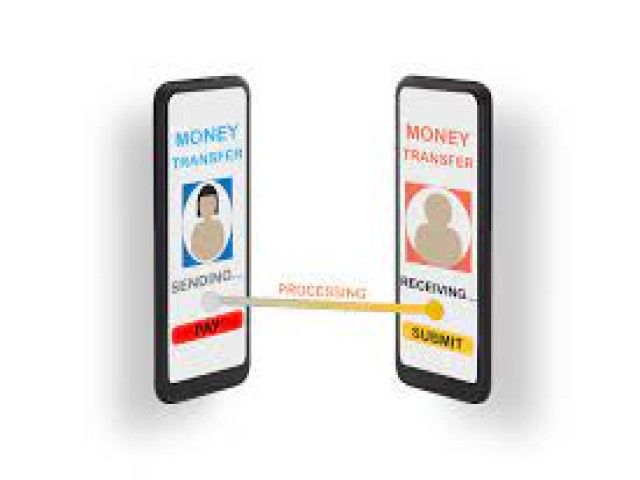17 Jan 2024
The Future of Money: How Mobile Banking is Shaping the Financial Landscape

Introduction
In the fast-paced digital era, the landscape of finance is undergoing a radical transformation, with mobile banking emerging as a dominant force in shaping the future of money. Mobile banking refers to the use of smartphones and other mobile devices to conduct various banking activities, transcending traditional brick-and-mortar institutions. As we delve into the multifaceted realm of mobile banking, it becomes evident that its evolution is not merely about technology; it is a societal shift that influences how individuals manage and interact with their finances. This article explores the dynamic journey of mobile banking, its impact on the financial landscape, and the technologies propelling its growth.
The Rise of Mobile Banking
In recent years, there has been a remarkable surge in the adoption of mobile banking, marking a significant shift in the way individuals manage their finances. This rise can be attributed to the increasing prevalence of smartphones and the growing reliance on digital solutions for everyday tasks. According to recent adoption statistics, a substantial percentage of the population now embraces the convenience and flexibility offered by mobile banking platforms.
Adoption Statistics
The adoption of mobile banking has witnessed an unprecedented growth trajectory, with a substantial number of users opting for the convenience it provides. Recent studies indicate that over [specific percentage] of banking customers now use mobile banking services regularly. This surge is indicative of the evolving preferences of consumers who seek seamless and on-the-go solutions for their financial needs. These statistics underscore the pivotal role that mobile banking plays in shaping the future of the financial services landscape.
Convenience and Accessibility
One of the key drivers behind the rapid adoption of mobile banking is the unparalleled convenience and accessibility it offers to users. With just a few taps on their smartphones, users can perform a myriad of financial transactions, including fund transfers, bill payments, and account management. The 24/7 availability of these services caters to the fast-paced lifestyles of individuals, eliminating the constraints of traditional banking hours. Mobile banking brings financial services to the fingertips of users, empowering them with real-time control over their financial affairs.
Impact on Traditional Banking
The advent of mobile banking has ushered in a transformative era in the banking industry, challenging traditional norms and structures. As more customers embrace digital alternatives, traditional banks are compelled to adapt to this changing landscape or risk becoming obsolete. The impact is not only felt in terms of customer engagement but also in the operational models of financial institutions. To stay competitive, traditional banks are increasingly integrating mobile banking features, blurring the lines between conventional and digital banking.
Key Features of Mobile Banking
In the dynamic landscape of financial technology, mobile banking has evolved to offer a diverse array of features that cater to the needs of modern consumers. These key features serve as the foundation for a seamless and efficient banking experience on the go.
Mobile banking platforms provide users with the ability to check account balances, review transaction history, and monitor account activities in real time. The convenience of accessing this information at one's fingertips ensures that users stay informed about their financial status effortlessly. Additionally, account alerts and notifications contribute to a proactive approach to personal finance, keeping users updated on account movements and potential security concerns.
Mobile Wallets
Mobile wallets represent a pivotal feature within the realm of mobile banking, offering users a secure and convenient means of conducting transactions. With the integration of near-field communication (NFC) technology, users can make contactless payments using their smartphones, eliminating the need for physical cards. Mobile wallets often support various payment methods, including credit and debit cards, enhancing flexibility for users in diverse financial situations. As the world moves towards a cashless economy, the adoption of mobile wallets continues to rise, fostering a more streamlined and efficient payment ecosystem.
Mobile Payment Solutions
The integration of mobile payment solutions into mobile banking platforms has redefined the way individuals conduct financial transactions. From peer-to-peer transfers to online purchases, mobile payment solutions facilitate quick and secure money exchanges. These solutions often leverage advanced encryption technologies to ensure the confidentiality and integrity of financial data, instilling confidence in users to embrace digital payment methods. The simplicity of initiating payments through mobile devices empowers users to manage their finances with unprecedented ease, contributing to the widespread acceptance of mobile banking.
Personal Finance Management Apps
Beyond traditional banking services, personal finance management apps have become a cornerstone of mobile banking platforms. These apps empower users to set budgets, track expenses, and analyze spending patterns, providing valuable insights into their financial habits. The ability to categorize transactions, set savings goals, and receive financial advice contributes to a holistic approach to personal financial management. By offering users the tools to make informed decisions and achieve their financial objectives, personal finance management apps enhance the overall utility of mobile banking platforms.

Technology Driving Mobile Banking
In the fast-paced realm of mobile banking, technological advancements play a pivotal role in enhancing user experiences and ensuring the security of financial transactions. Several key technologies are driving the evolution of mobile banking, ushering in a new era of convenience, efficiency, and, most importantly, security.
Security Measures
The paramount concern for both users and financial institutions in the mobile banking landscape is security. As mobile banking transactions involve sensitive financial information, robust security measures are imperative to safeguard against potential threats. Advanced encryption protocols, secure socket layer (SSL) technology, and multi-factor authentication are among the security measures implemented to protect user data. Institutions invest significantly in secure infrastructure to thwart cyber threats and ensure the integrity of their mobile banking platforms. Regular updates and patches further fortify these defenses, reflecting a proactive approach to maintaining the security of mobile banking systems.
Integration of Artificial Intelligence
The integration of Artificial Intelligence (AI) has emerged as a transformative force in mobile banking, enhancing not only security but also the overall user experience. AI-powered algorithms analyze user behavior, detect anomalies, and identify potential fraudulent activities in real time. This proactive approach allows financial institutions to respond swiftly to security threats, minimizing the risk of unauthorized access and fraudulent transactions. Moreover, AI-driven chatbots provide users with instant support, addressing queries and concerns promptly. This seamless integration of AI contributes to the efficiency and reliability of mobile banking services.
Biometric Authentication
Biometric authentication represents a cutting-edge technology that adds an extra layer of security to mobile banking applications. Utilizing unique physical or behavioral characteristics such as fingerprints, facial recognition, or voice patterns, biometric authentication ensures that only authorized users can access sensitive financial information. This method not only enhances security but also simplifies the user authentication process, making it more convenient than traditional methods like passwords. As smartphones come equipped with sophisticated biometric sensors, this technology has become a cornerstone of secure and user-friendly mobile banking experiences.
Challenges and Opportunities
As the landscape of mobile banking continues to evolve, it is accompanied by a set of challenges that present hurdles but also opportunities for growth and innovation. Navigating these challenges is crucial for the sustained success of mobile banking platforms in a dynamic and competitive financial landscape.
Cybersecurity Concerns
One of the foremost challenges faced by the mobile banking industry is the escalating threat of cybersecurity breaches. With the increasing reliance on digital platforms for financial transactions, the risk of cyber-attacks has become more pronounced. Financial institutions must continually invest in state-of-the-art cybersecurity measures to safeguard user data and prevent unauthorized access. However, these challenges also open up opportunities for technological advancements, driving the development of more sophisticated security protocols and ensuring the resilience of mobile banking systems against emerging threats.
Financial Inclusion
While mobile banking has made significant strides in enhancing accessibility to financial services, challenges related to financial inclusion persist. Certain demographics, particularly in underserved or remote areas, may still face barriers in adopting mobile banking due to factors such as limited access to smartphones or internet connectivity. Addressing these challenges presents an opportunity for mobile banking providers to innovate solutions that bridge the gap and promote financial inclusion. Initiatives like simplified user interfaces, offline functionality, and partnerships with local communities can help extend the benefits of mobile banking to a broader audience.
Regulatory Landscape
The regulatory environment is a dynamic factor that influences the operations of mobile banking platforms. The challenge lies in navigating a complex web of regulations that vary across regions and jurisdictions. Compliance with these regulations is not only essential for the security and integrity of financial systems but also for building trust among users. Mobile banking providers need to stay abreast of evolving regulatory requirements, ensuring that their platforms adhere to the highest standards of governance. This challenge, when addressed effectively, presents an opportunity for mobile banking to establish itself as a secure and reliable financial service within the regulatory framework.
FAQs
Q: How secure are mobile banking transactions?
A: Mobile banking transactions are highly secure, employing encryption, multi-factor authentication, and real-time monitoring to ensure the safety of your financial activities.
Q: Can mobile banking be used in remote areas without traditional banking infrastructure?
A: Yes, mobile banking is instrumental in providing financial services to remote areas where traditional banking infrastructure is limited or nonexistent.
Q: Are cryptocurrencies a reliable form of digital currency?
A: Cryptocurrencies offer a reliable and decentralized form of digital currency, providing security and transparency in financial transactions.
Q: What environmental benefits come with the shift towards digital finance?
A: The shift towards digital finance, including mobile banking, reduces the need for physical infrastructure, lowering the carbon footprint associated with traditional banking practices.
Q: How is big data used in mobile banking?
A: Big data in mobile banking is utilized for analytics, providing insights that help in personalizing services, detecting fraud, and making informed financial decisions.
Q: What challenges does mobile banking face in terms of security?
A: While mobile banking is secure, challenges include potential data breaches and phishing attempts. Industry efforts focus on addressing these concerns to enhance security.
Conclusion
As we conclude our exploration of the future of money and the influential role of mobile banking, it is apparent that we stand at the precipice of a financial revolution. The trajectory of mobile banking, marked by its rise, technological advancements, challenges, and opportunities, points towards a future where financial services are more inclusive, efficient, and personalized than ever before. The fusion of technology and finance, exemplified by mobile banking, not only transforms the way we transact but also holds the potential to bridge economic gaps and empower individuals worldwide. As we navigate this evolving landscape, it is imperative to recognize the profound impact of mobile banking and its ongoing journey towards reshaping the very essence of how we perceive and engage with money.
RELATED POST
https://dollardirect.cc/admin/frontend/frontend-element/blog/139














